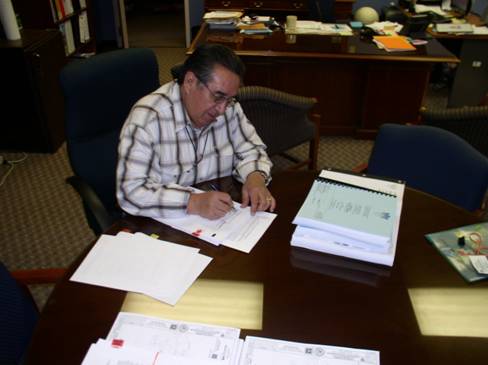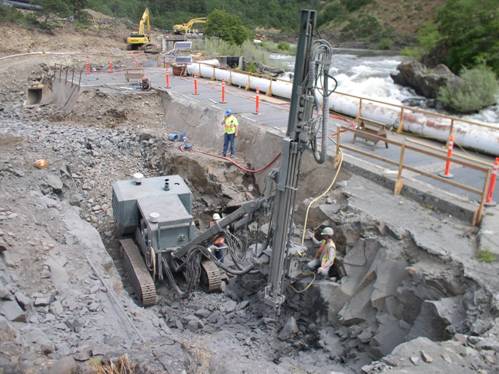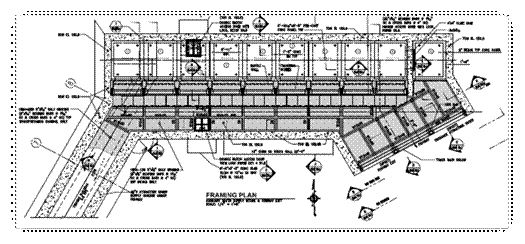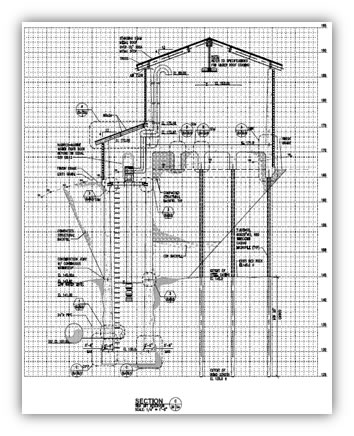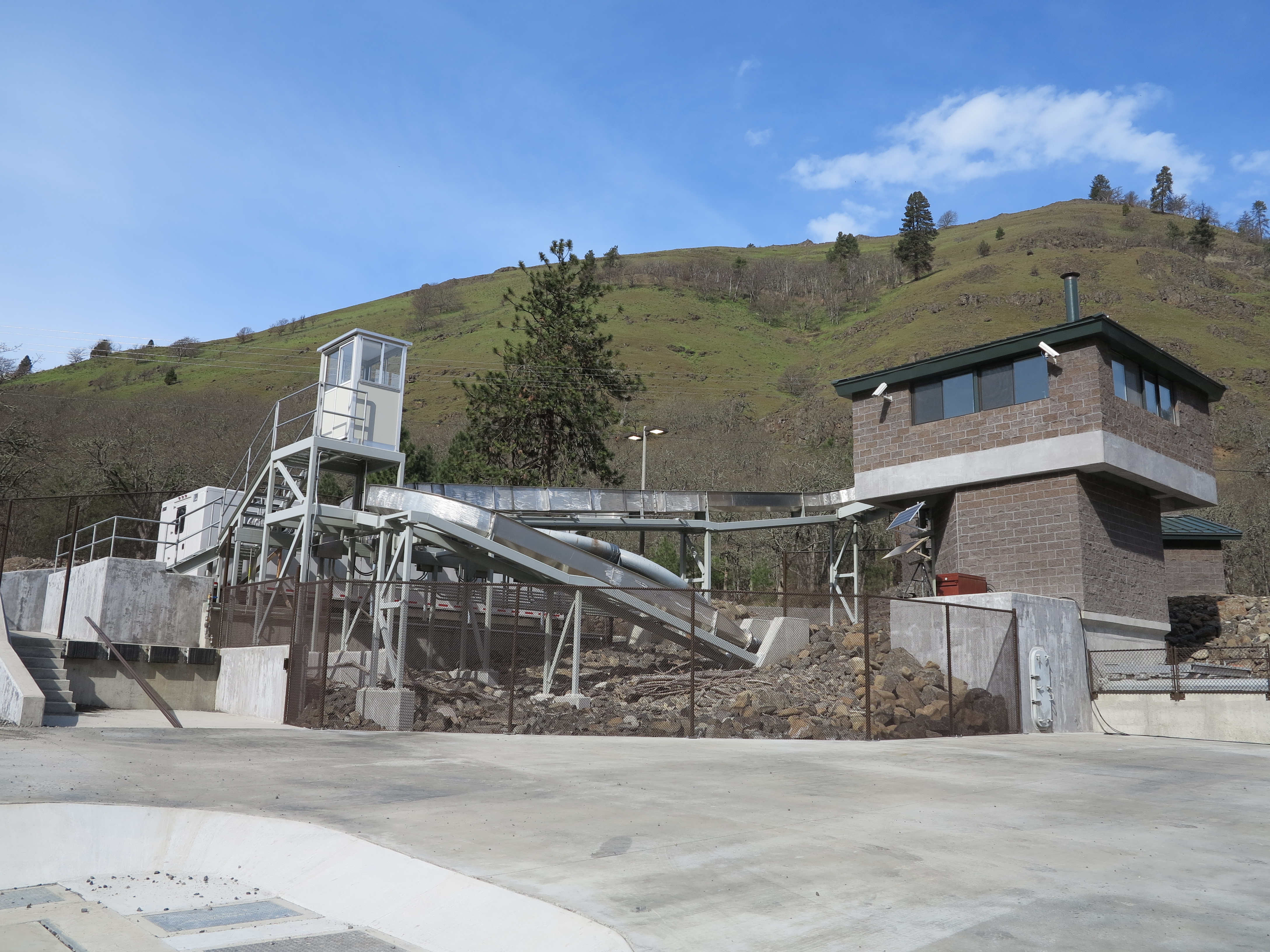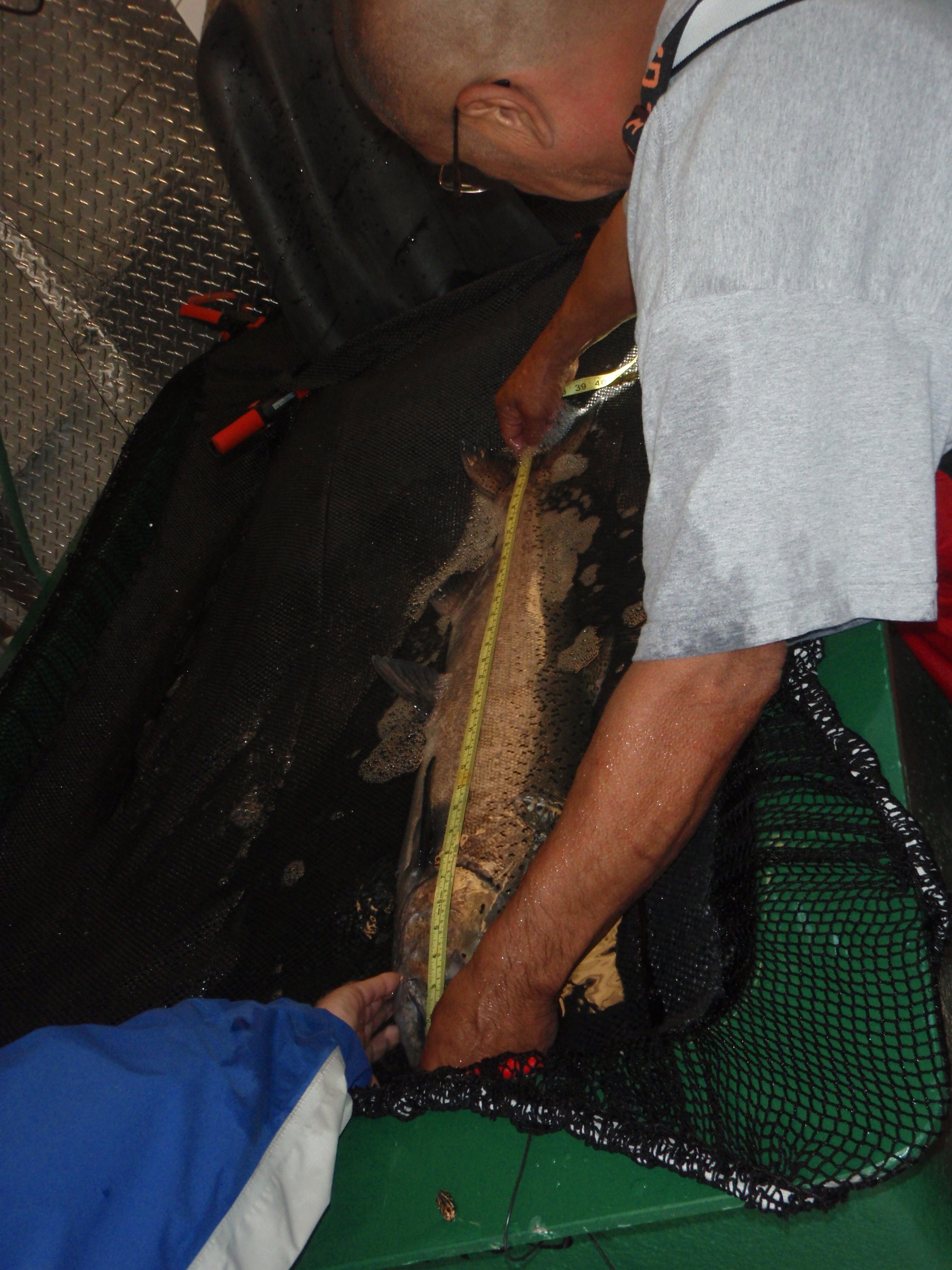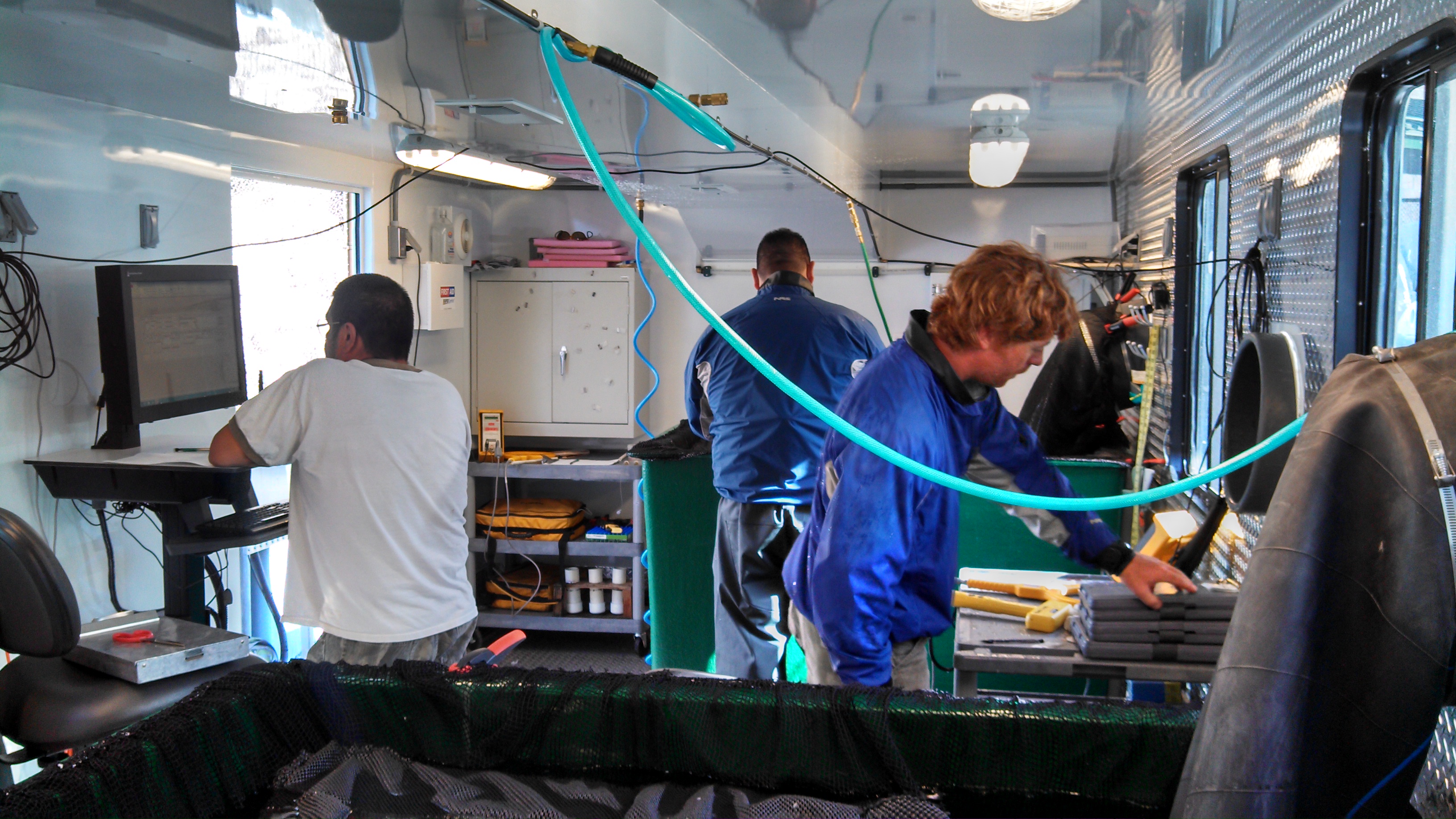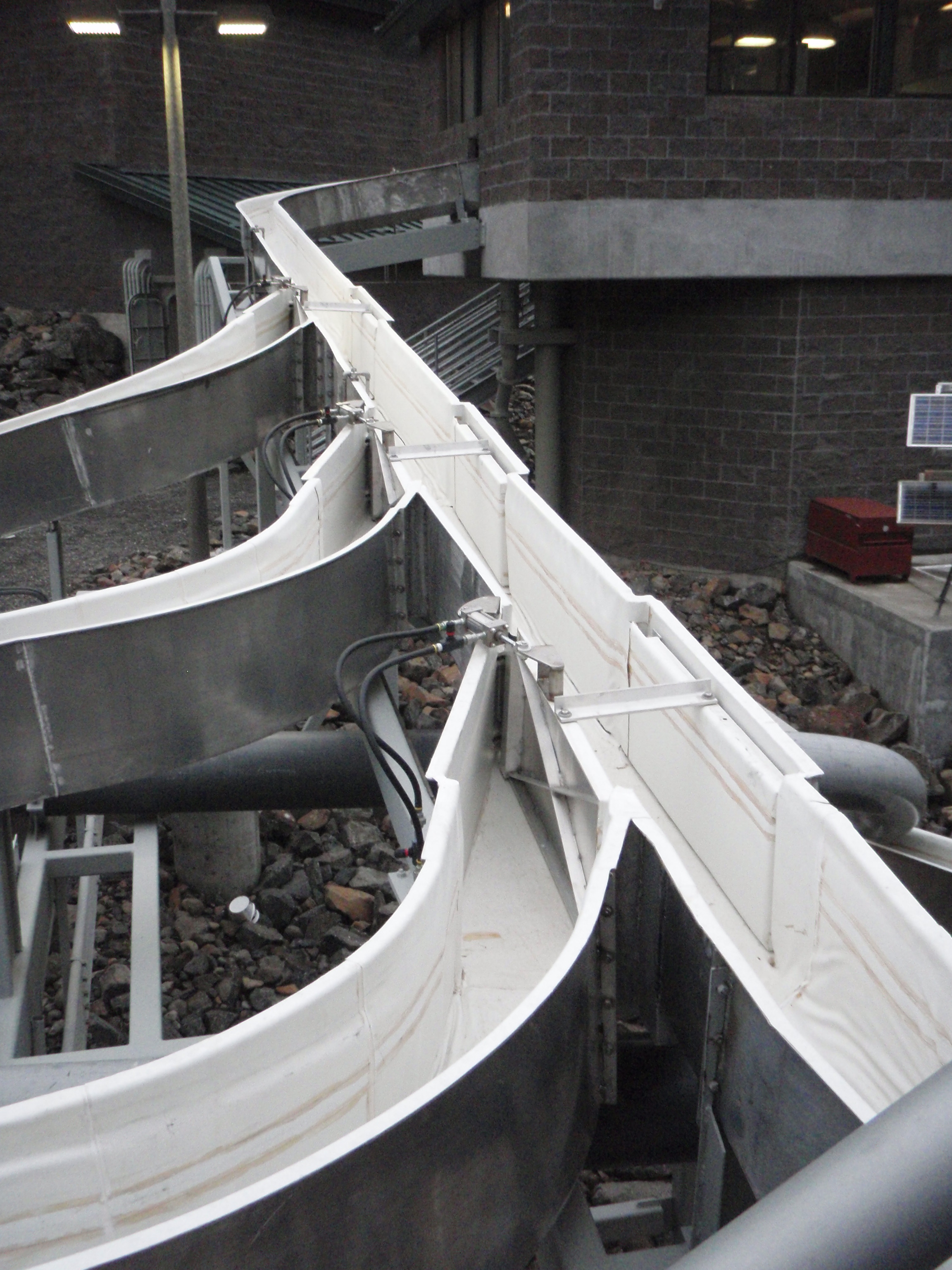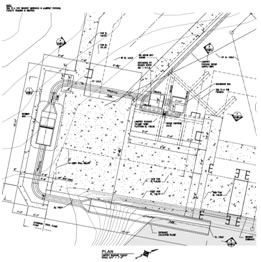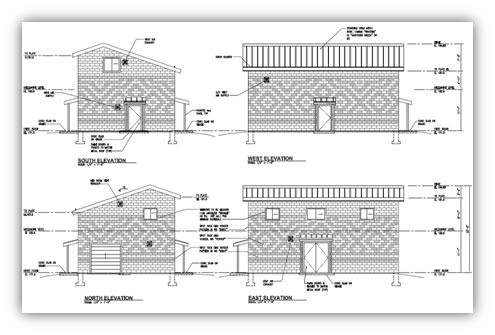On March 26, 2010 the Yakama Nation contracted with William Charles West to reconstruct the over-60-year-old Lyle Falls Fishway to meet federal fish passage criteria, and build a state-of-the art adult fish collection facility. The updated facility incorporates modern monitoring capabilities, reduces fallback of adult fish over Lyle Falls, provides better fish attraction flows, and a safer working environment. |
||
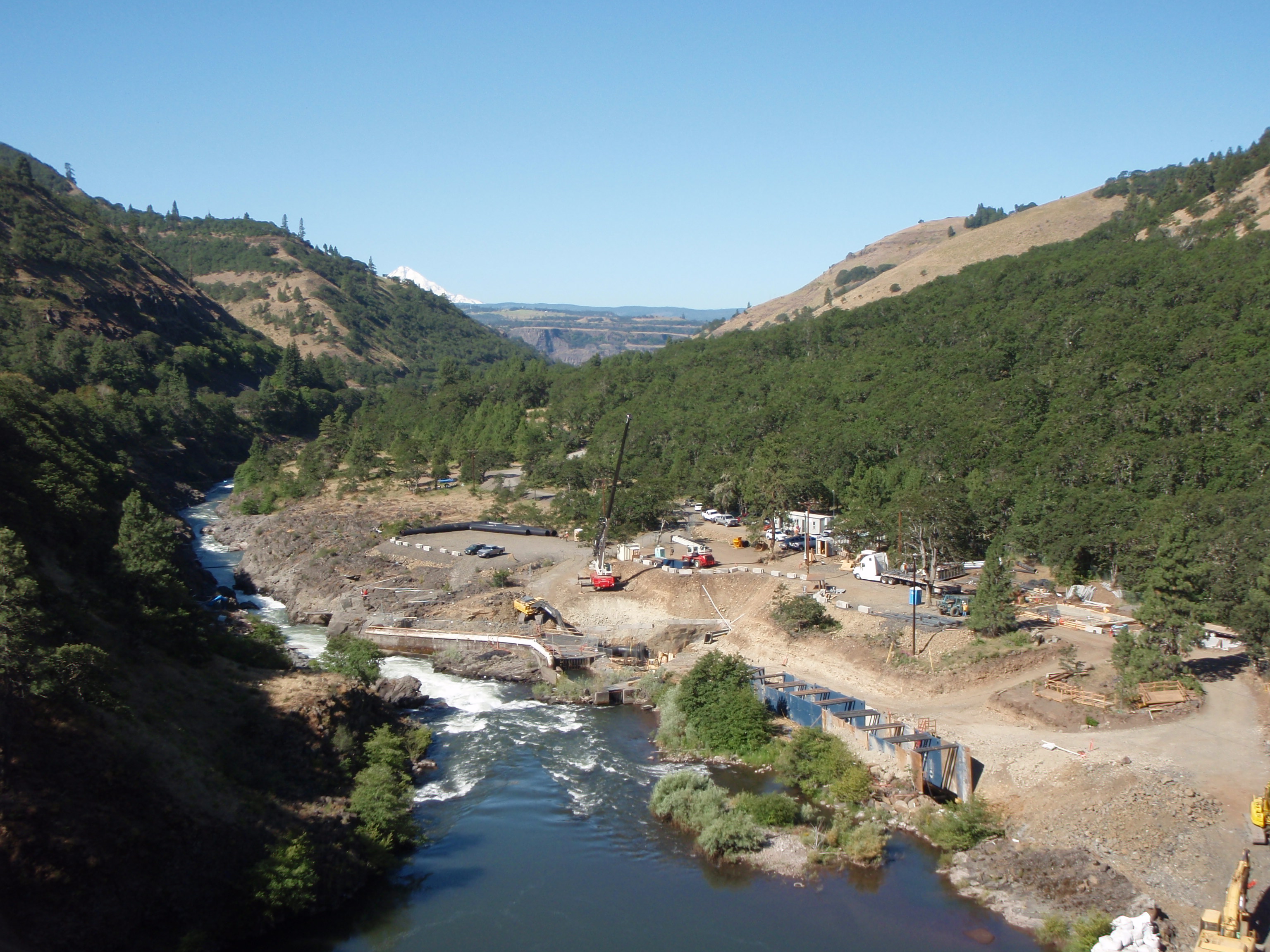 Shot of project site showing extent of excavation. July 6, 2010. |
Engineering design studies were conducted for several years by Harbor Consulting Engineers, Inc. to advance the project to the construction stage. Ground was broken at the 10-acre work site in early April 2010. |
|
Yakama Nation cultural specialists and an archaeologist were onsite to monitor ground-disturbing activities to ensure cultural compliance in this sensitive work site. The new facility provides the foundation for data gathering which will inform hatchery reform actions in the Klickitat Basin.
Improvements to the facilities now enhance ceremonial, subsistence and commercial harvest to meet Treaty responsibilities, provide sport and recreational opportunities to citizens of the Pacific Northwest and economic benefit to rural Klickitat County. 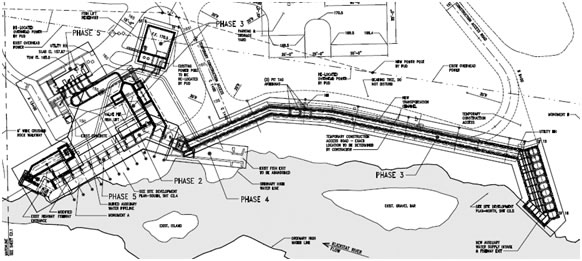 Design drawing of fishway. |
Drill rig preparing for line blast near fishway entrance. June 1, 2010. |
|
| Lyle Falls structures under construction | ||
| Adult Fish Transportation Channel | ||
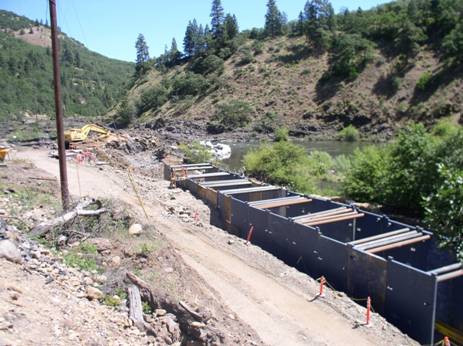 View of Transportation Channel. June 22, 2010. |
A 350-foot-long channel extending from the existing fishway exit was constructed to pass adult fish upstream into a deep, quiet pool. Extension of this fishway enables water collection in an area free of rocks and gravels thus reducing a previously severe maintenance issue. |
|
|
|
||
| Water In-take and Auxiliary Water Supply Line | ||
At the upstream end of the adult transportation channel a water in-take was constructed. This in-take serves two functions: first, to supply the water in the adult channel for adult salmon to swim upstream and return to the river, and second, provide the auxiliary water supply. The auxiliary water supplies the fish lift reservoir and provides increased attraction flow at the fishway entrance, as well as other needs. Because the auxiliary line must screen out juvenile fish prior to collection of the water, it has been designed to meet or exceed these federal screening requirements. |
||
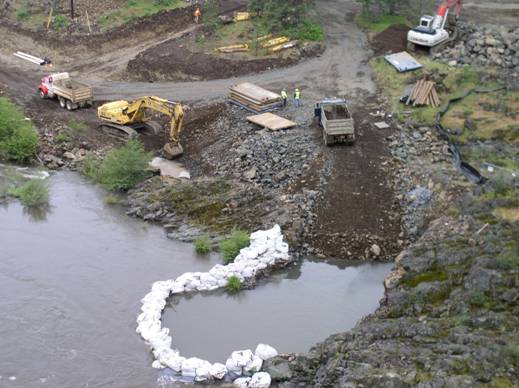 Coffer dam securing site and location of intake structure to supply water to facility. May 18th, 2010. |
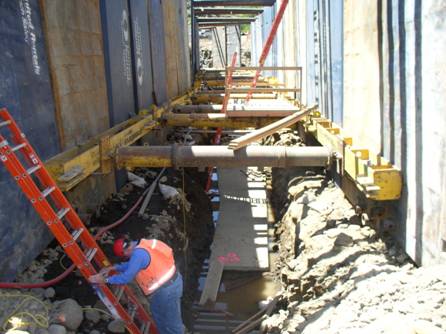 Transportation Channel excavation with large trench boxes to ensure worker safety. |
|
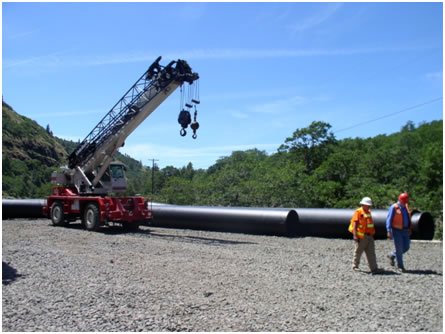 HDPE auxiliary water line in staging area... |
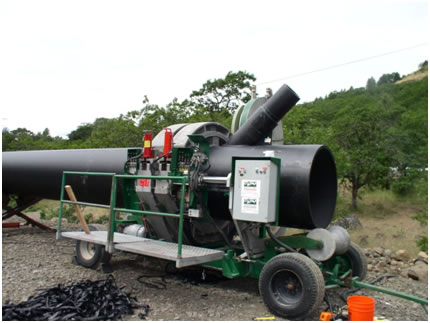 ...and being fitted, prior to installation below adult transportation channel. June 22, 2010. |
|
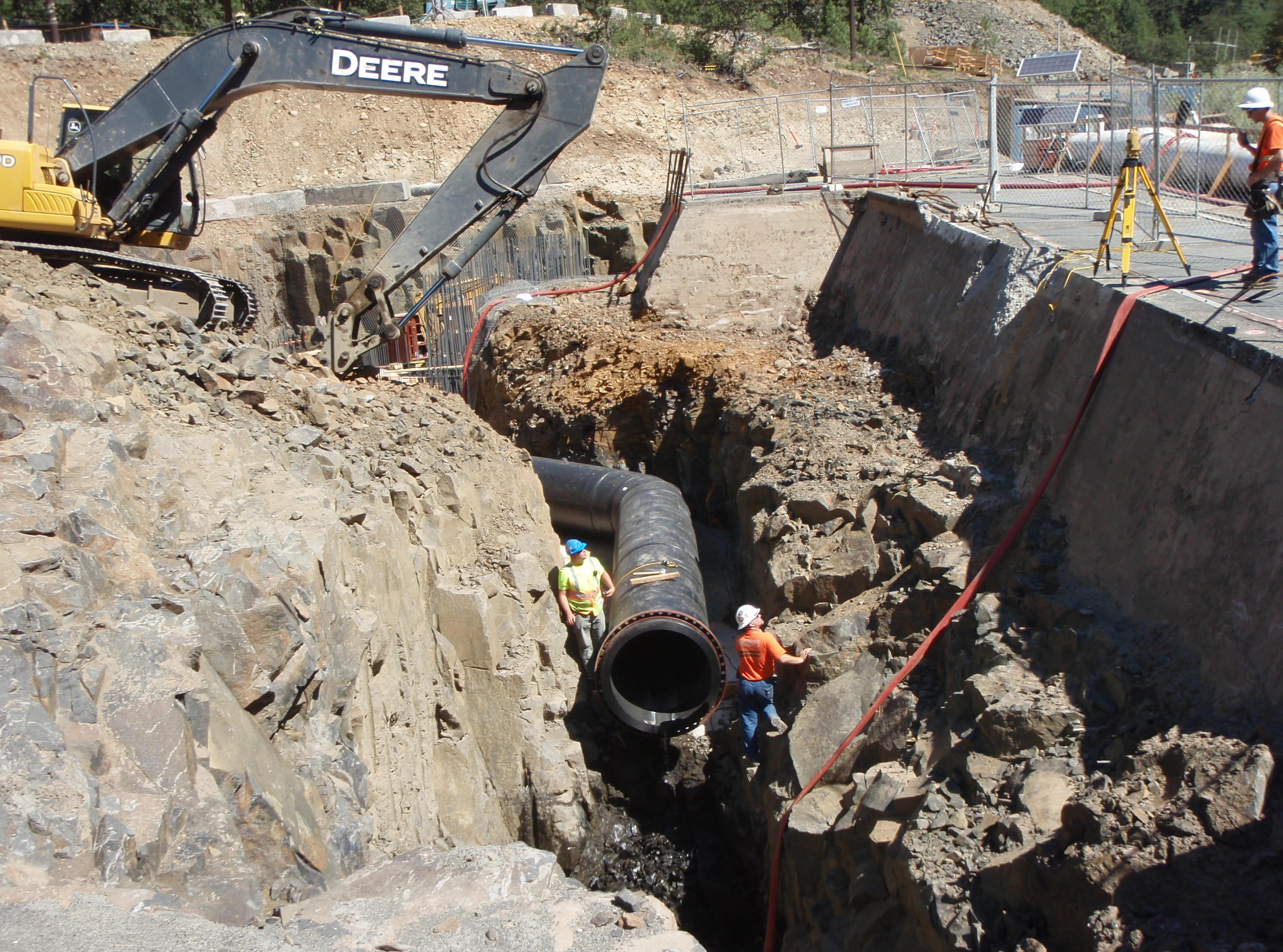 Placement of the auxiliary water line in excavated area. July 6, 2010. |
||
|
|
||
| Fish Lift Reservoir | ||
The fish lift reservoir, supplied by the auxiliary water line, holds 56,000 gallons of screened river water to provide the head to safely raise the captured adult salmon in the fish lift. This confers the ability to transfer fish using a water-to-water transfer, which now meets federal requirements for safely moving fish through the facility. Two 40hp pumps cycle to fill the reservoir. The reservoir allows for 2 static and 3 dynamic lifts per hour.
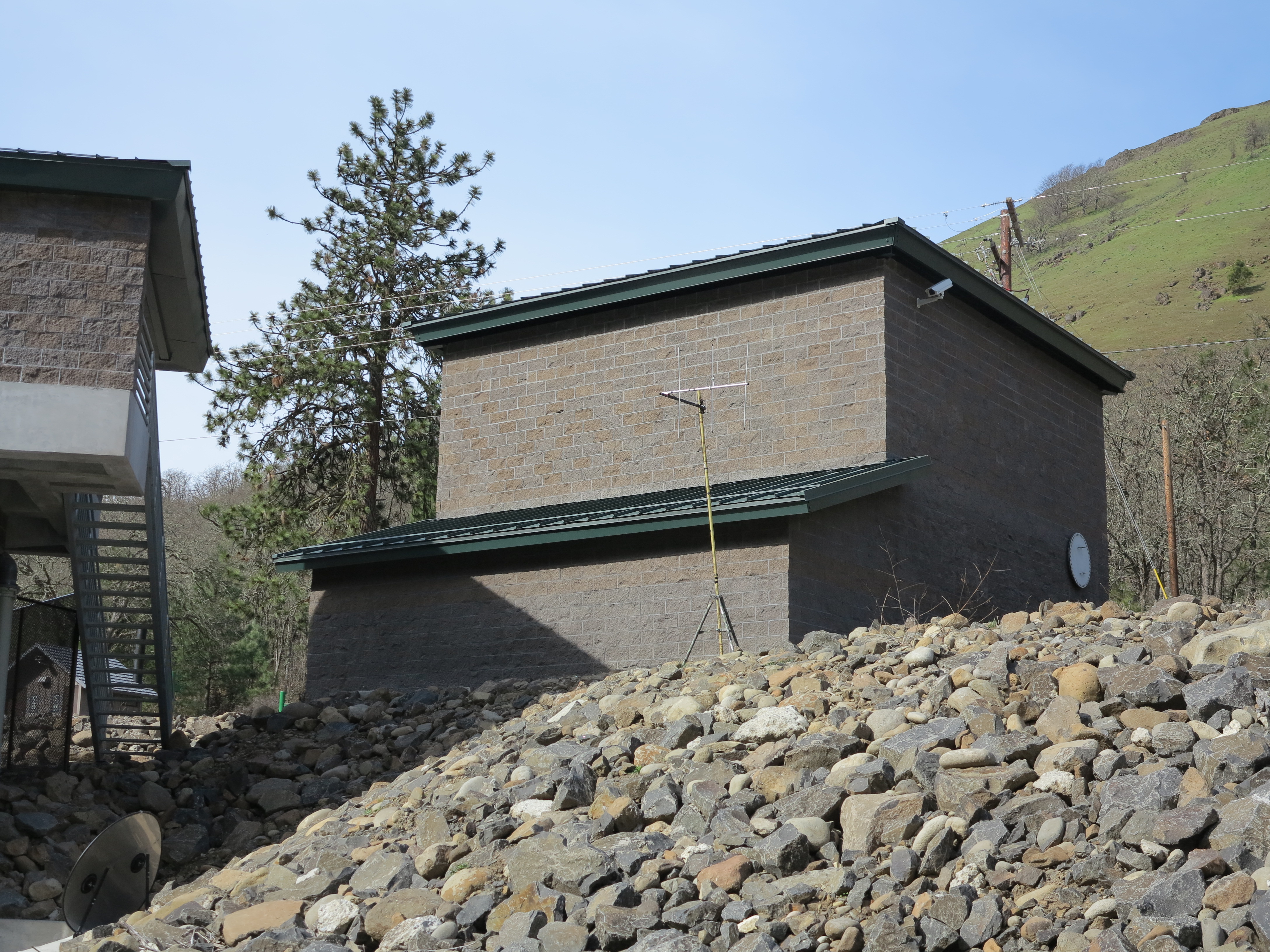 |
||
| Fish Lift | ||
The fish lift uses approximately 20,000 gallons of water per lift to raise fish up in the chamber. At the top of the chamber a false attraction weir commits fish to the flume system for delivery into the adult fish work-up facility. Again, this system allows for a water-to-water transfer, beneficial for fish health.
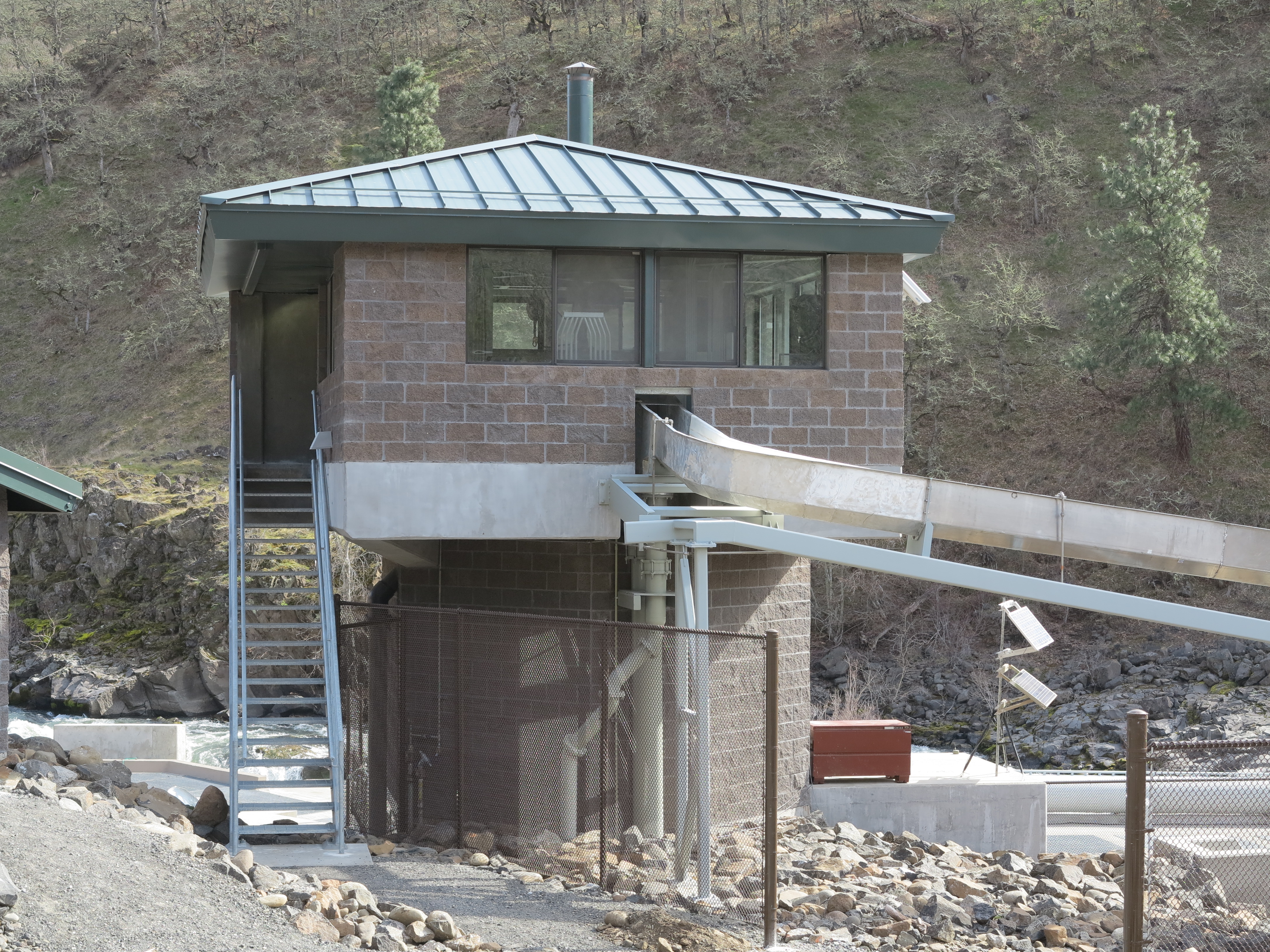 Fish Lift design drawing (click for larger image). 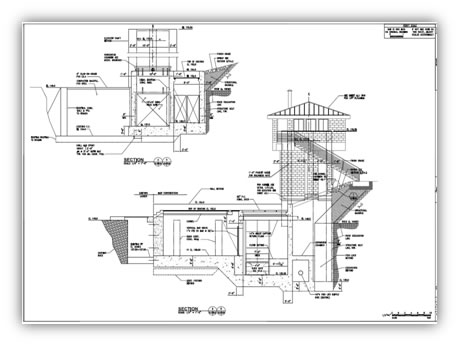 |
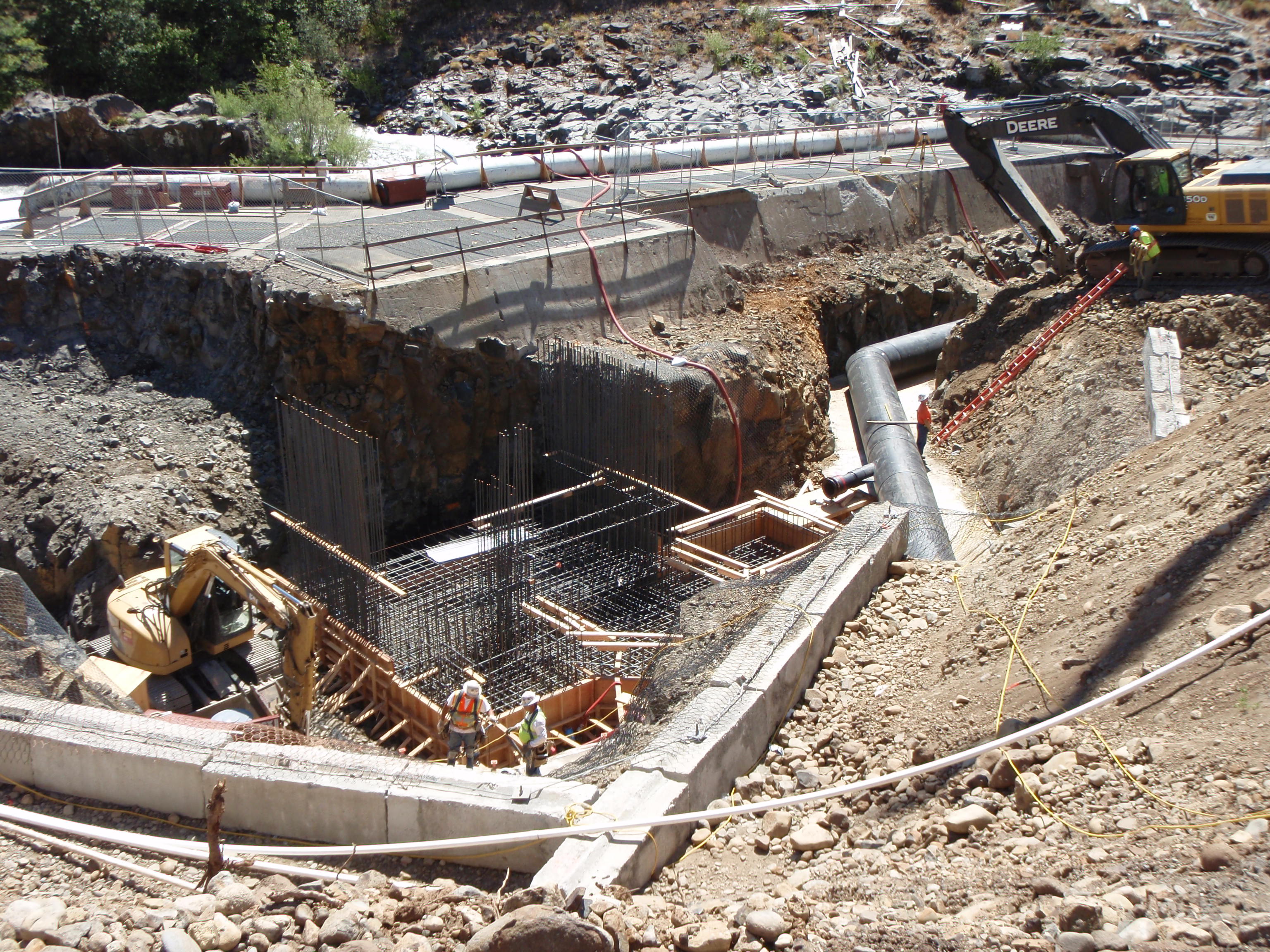 Fish Lift structure excavation and reinforcement. July 6, 2010. |
|
|
|
||
| Adult Fish Work-up Facility | ||
Fish can be identified by species as they slide down the flume system and are diverted to the appropriate holding chamber inside the work-up facility. While in the facility, biological information and cumulative totals by species are collected.
Fish are handled according to federal and tribal fish-handling criteria to ensure post-release survival. Fish either exit into the upper portion of the fish ladder for recovery and continued migration upstream, or are transported via truck to a release location upstream.
|
||
| Passive Integrated Transponder (PIT) Detection Array | ||
A series of three PIT-tag detectors using the latest in PIT detection technology were installed in the fishway to remotely collect data on fish containing PIT tags. PIT tag technology allows fisheries managers to gather more detailed information about salmon survival, abundance, and travel times by individually identifying fish at various detector locations in the Klickitat and Columbia River basins. |
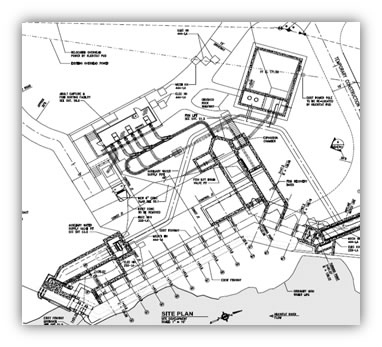 Design drawing of PIT-detection Array (click for larger image). |
|
|
|
||
| Lamprey Passage Device | ||
| Because the Klickitat River provides important habitat to the dwindling numbers of culturally important Pacific lamprey in the Columbia Basin, a special lamprey passage device was installed at the entrance to the new fishway. Since water velocities at the entrance of the improved fishway are likely be too high to pass lamprey migrating along rocks on the west side of the river, a small lamprey ladder of similar design to the large-scale version at Bonneville Dam was installed to provide safe and efficient passage. Efficient passage upstream is critical to ensure that lamprey preserve energy for spawning. | ||
|
Design drawing of lamprey passage device (click for larger image). |
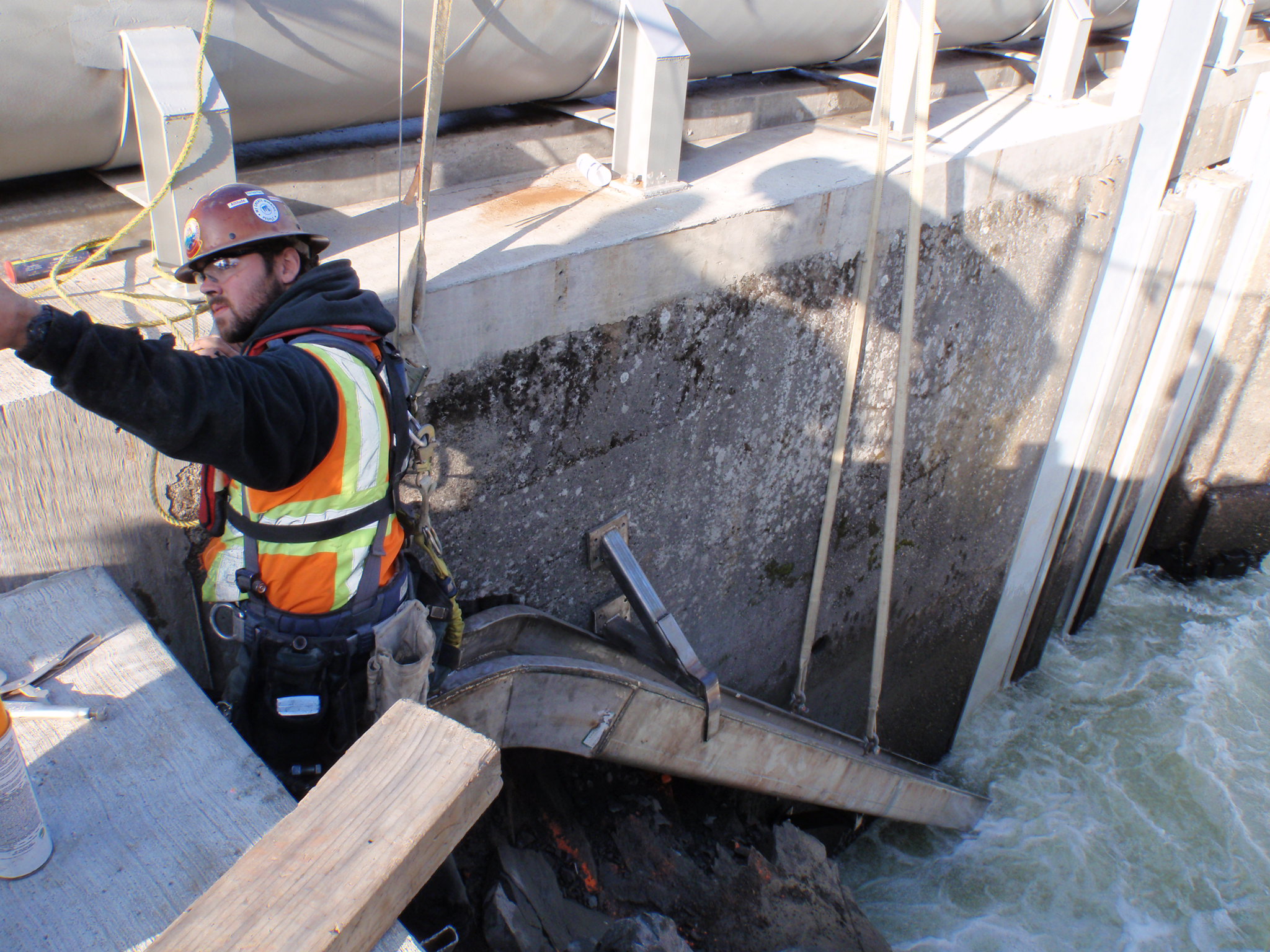 |
|
| Equipment & Control Building | ||
A 41’ x 26’, two-story building houses the control center for facility operation and system-monitoring, as well as equipment storage. The structure was constructed out of concrete masonry blocks and decorated with a native Klickitat basket design of neutral colors to blend with the surrounding landscape.
|
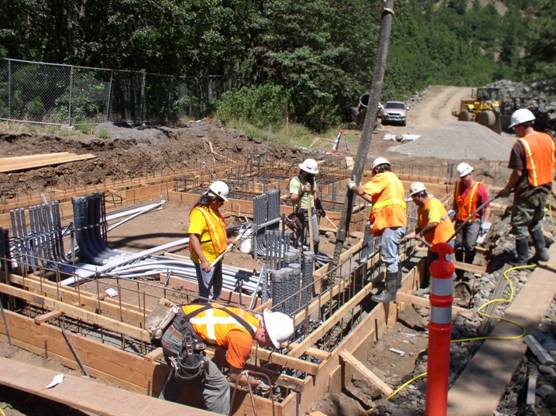 Pouring foundation wall of Control Building. June 22, 2010. |
|
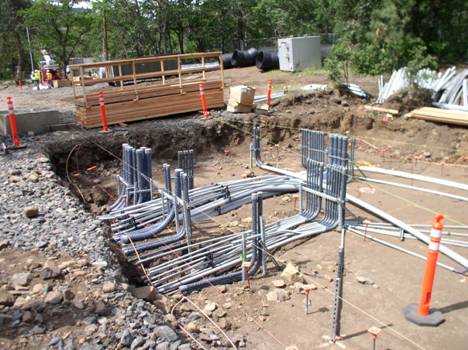 Control Building conduit for facility operation. June 1, 2010 |
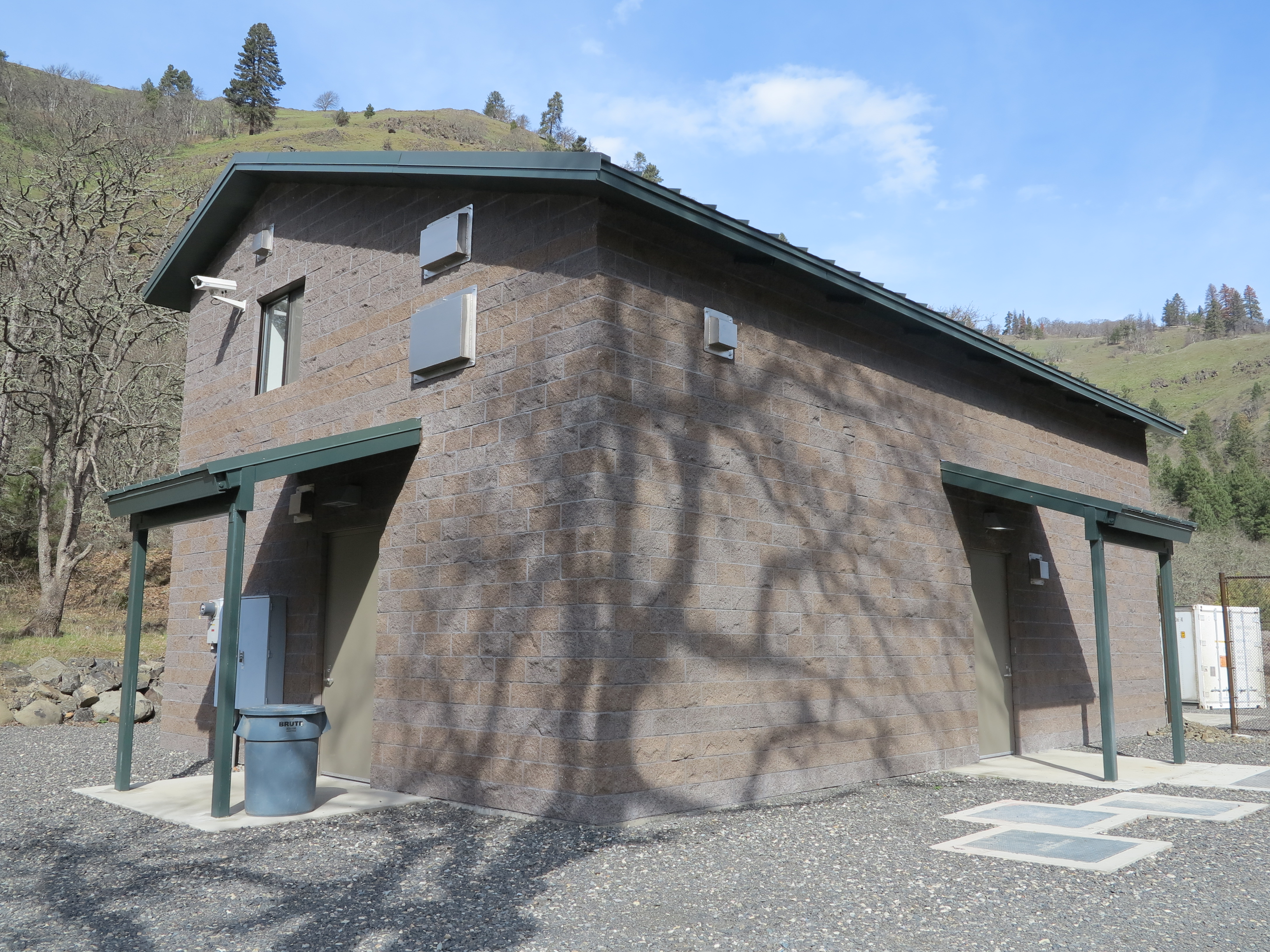 |
|
News articles about Lyle Falls fishway improvements:
"Lower Klickitat Fish Passage Project Offers Way to Future" (White Salmon Enterprise, Aug. 2, 2011)
"Klickitat Fishway Nearing Completion" (Vancouver Columbian, Aug. 12, 2011)
| to Fish Accords page | |
